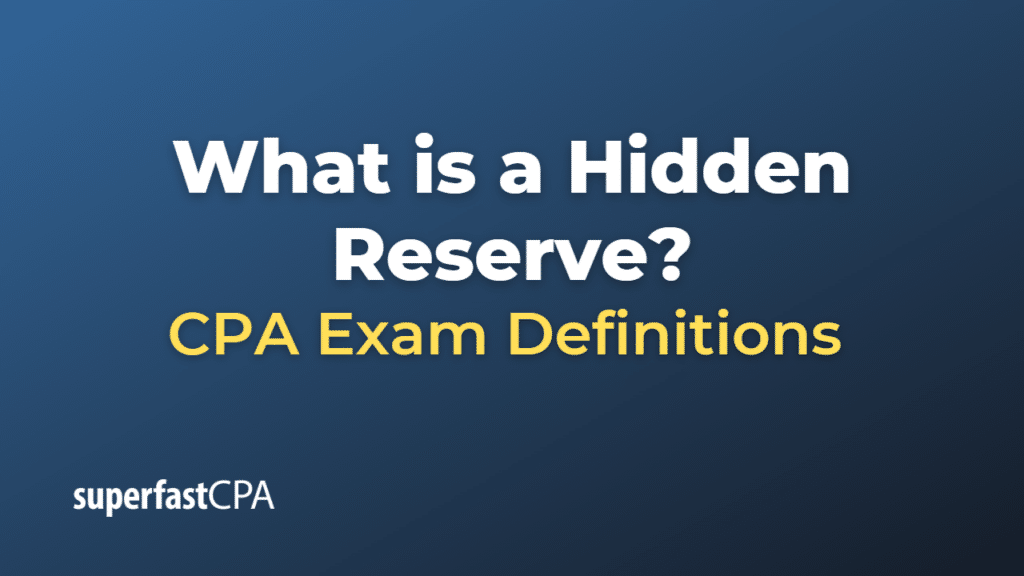Hidden Reserve
A hidden reserve, also known as a secret reserve, is a reserve that is not clearly stated or identified in a company’s financial statements. The term is most commonly used in accounting within certain countries that allow some level of discretion in recognizing and reporting reserves.
Hidden reserves can be created in various ways, including:
- Underestimating Income: A company might underestimate its potential income or overestimate its potential expenses, creating a hidden reserve.
- Overestimating Depreciation: By charging more depreciation than what is actually required, a company can create a hidden reserve.
- Undervaluing Assets: If a company undervalues its assets (for example, inventory or real estate), a hidden reserve can be created.
- Overvaluing Liabilities: Overstating the value of potential liabilities can also create a hidden reserve.
The purpose of creating a hidden reserve can vary. Some companies do it to maintain a consistent profit level, showing less profit in good years to balance out potentially poorer performance in future years. Other companies might create hidden reserves to pay for anticipated future expenses, or to maintain a conservative image by not showing ‘too much’ profit.
However, hidden reserves can also make a company’s financial situation appear worse than it is, obscuring the true financial health of the business. This lack of transparency can mislead investors, creditors, and other stakeholders. For this reason, hidden reserves are not allowed under some accounting standards, such as U.S. Generally Accepted Accounting Principles (GAAP) and International Financial Reporting Standards (IFRS), which require companies to clearly report their reserves.
Example of a Hidden Reserve
Suppose Company ABC manufactures a range of electronic products. They estimate that about 2% of their products will be returned under warranty and, therefore, they set up a warranty provision of $200,000 for the year, given that their total projected sales revenue is $10 million.
However, based on their past experience and quality control measures, actual returns tend to be around 1% of sales, or $100,000.
In this case, Company ABC has effectively created a hidden reserve of $100,000 ($200,000 provisioned minus $100,000 actual). This hidden reserve is not explicitly reported on the financial statements. If the company continues to overestimate its warranty returns, the hidden reserve will keep growing each year.
The company could then use this hidden reserve in a future period, for instance, by releasing a part of the reserve to boost reported profits during a year of lower-than-expected performance. This would help smooth earnings and present a more stable financial picture to investors.
While this practice may seem beneficial to the company, it lacks transparency and can distort the true financial performance and condition of the company, which could potentially mislead stakeholders. It’s worth noting again that hidden reserves are not permitted under some accounting standards, such as U.S. GAAP and IFRS.













